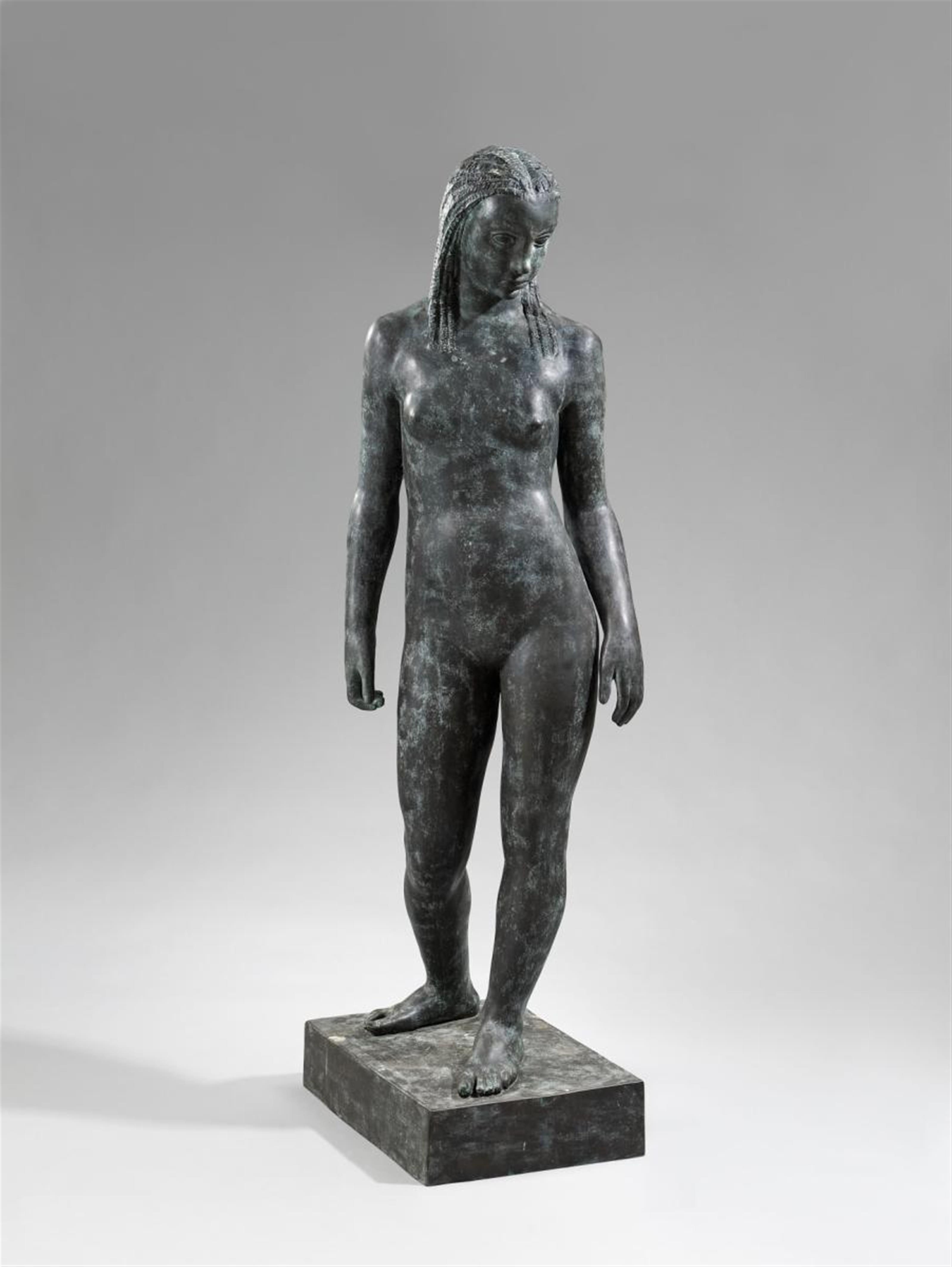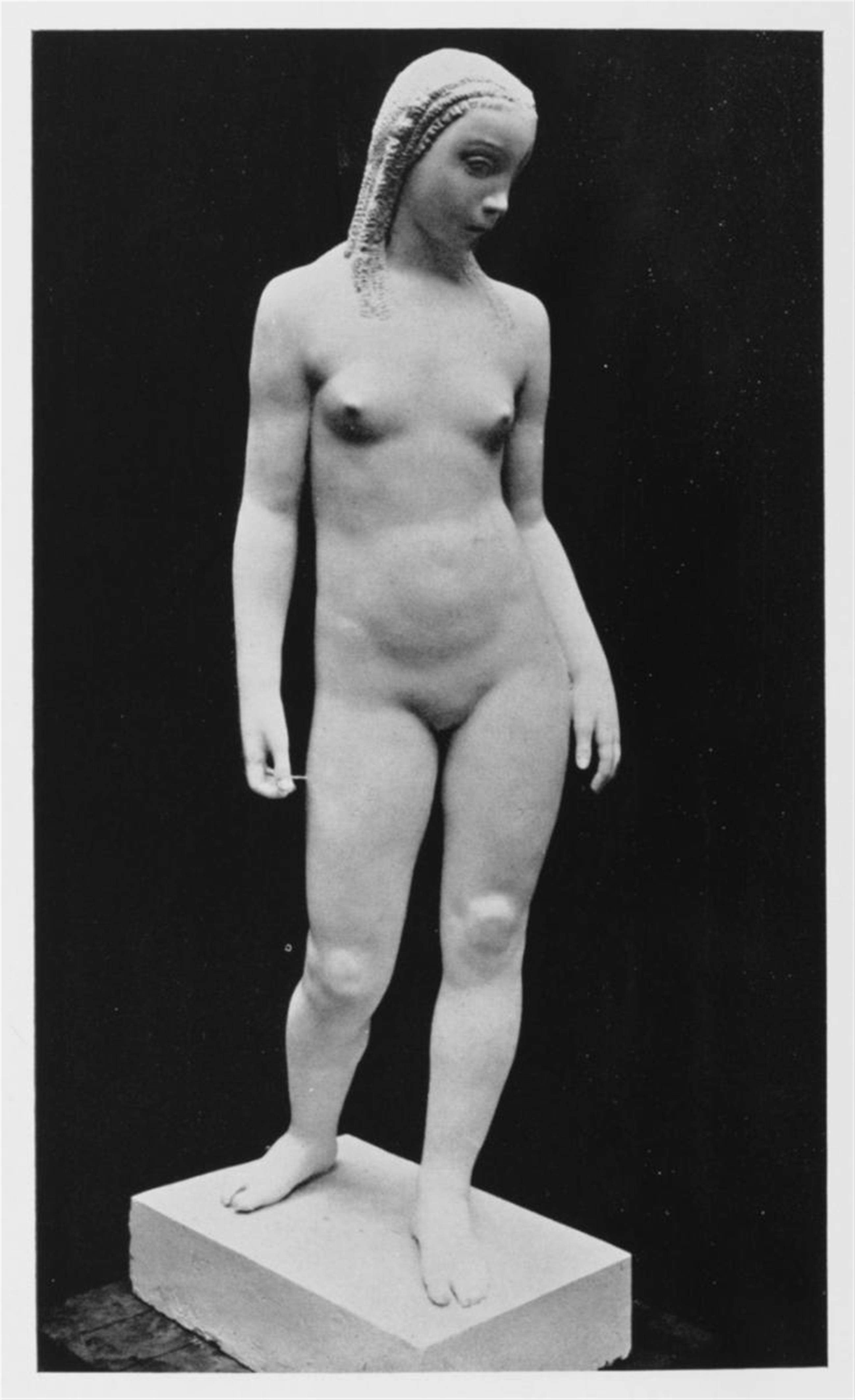Bronze sculpture. Height 170.2 cm. Signed and dated 'ERNEST WIJNANTS 1936' on the back of cast-with plinth (13 x 39.5 x 60 cm). Probably posthumous cast. - With anthracite, greenish oxidized patina.
Ernest Wijnants belonged to a family of woodcarvers who made furniture for bourgeois families in Mechelen. He spent a short time at the Brussels Academy in the atelier of Charles van der Stappen (1843-1910) who taught him modeling from nature. Ernest Wijnants became friends with the Brabants fauvist Rik Wouters (1882-1916), whose sculptures had a strong impact on Wijnants' work. In 1913 he made his first public appearance with his sculpture "Echo" (Museum of Fine Arts, Ghent). During the following decade his work was determined by a contract he signed with Antwerp meceneas Baron Frédéric Speth, for whom he executed 28 'Bathers', female figures in the nude or draped with diaphanous veils. Since the 1920's, art historians have been tempted to associate Ernest Wijnants with the French sculptor Antoine Bourdelle, due to his eclectic style and historical references. In comparison to his smaller sculptures, monumentality has a similar importance in Wijnants' artistic mastery: He executed public monuments in Mechelen, Brussels, Mortsel, Lausanne, and others. In 1926 he became professor at the Academy of Fine Arts in Antwerp, and from 1931 to 1953 professor at the National Institute of Fine Arts and Architecture in Antwerp.
Wijnants sculptural approach of the 1930's preludes a period of maturity. The abundance of ornamental accessories vanished to leave space for almost but pure nudity and formal simplicity. 'Dromerij', which he realized in 1936, features a sophisticated coiffure made of thinly applied braids, the only reminiscence of the foisonant and brightly decorated nymphs from his early period. The wooden version of Dromerij (op. cit. Albert Van Hoogenbemt, Antwerp, 1949, cat. no. 18), has a smooth and tender surface alluding to ethereal qualities, while the bronze version is showing nervosity and strength, the rough texture of the bronze making it feel as if the figure would come alive. Stylistically, Dromerij is related to bronze and wooden works from the same period: "Meditation" (1936), "Puberty" (1938), "Walking Eve" (1942).
Provenance
Private collection, the Netherlands
Literature
Ernest Wijnants 1878-1938, Antwerp 1939, cat. without no. under the year 1939, "Droomerij/Rêverie" (plaster); Albert Van Hoogenbemt, Ernest Wijnants, Monographies de l'art belge, Antwerp 1949, cat. no. 18 with full-page illus., "Dromerij/Rêverie" (wood)
Exhibitions
Mechelen 1939 (Stedelijke Feestzaal), Ernest Wijnants, cat. no. 28, "Droomerij" (plaster)




